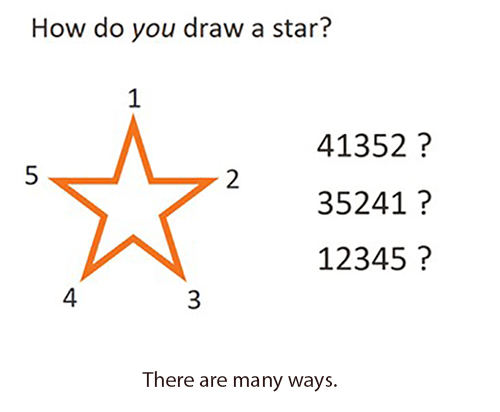
Photo Credit: Patcharin Saenlakon/EyeEm/Getty Images
Recently, a question was circulated on social media: How do you draw a star?
A seemingly simple question, it revealed a surprising diversity of answers and demonstrated that there are many ways to draw a star.

The question caused us to reflect on FHI 360’s work in market development and product introduction for new and underutilized health technologies around the world. Just as there are many ways to draw a star, there are many ways to accelerate and expand access to products that people want and need.
Effective, lifesaving health products often do not reach the people who need them the most, including those products that prevent HIV, treat malaria, prevent unwanted pregnancies and reduce maternal deaths. Over the past several decades, substantial investments have been made to reduce the time it takes to introduce and scale up health innovations in low-resource settings. Despite these efforts, lengthy research-to-practice gaps still exist between when products are approved and available for use and when they are scaled up. The World Health Organization (WHO) estimates as many as 2 billion people worldwide do not have access to essential medicines.
A new conceptual model
FHI 360 has a long track record of implementing effective solutions to bridge the gaps between research, development, product introduction and scale-up. Globally, FHI 360 works to expand access to more than 20 health products across nine therapeutic areas. The question about how to draw a star inspired us to develop a new model for how we approach accelerating access. This graphic captures key aspects of our market development and product introduction (a more detailed graphic is available).

Just as when we draw a star, development and expansion of markets for new products do not always begin at the same place. Our work often has different starting points that depend on many factors, including the amount and type of existing evidence about a product’s effectiveness and/or potential demand, the regulatory status of current products and current market barriers and potential solutions.
In one case, a challenge to product scale-up may be supply-chain constraints. In another, we may not fully understand the profiles of potential users, commodities may be unaffordable and/or there may not be appropriate national policies or guidelines to support product delivery and use. Also, the pathway to product introduction and scale-up is not linear. We must stay responsive and nimble to changing circumstances, and our strategies for market development are often iterative.
Different points on the star
Several FHI 360 projects highlight these points. For example, we worked for more than a decade to expand access to contraceptive implants by supporting the introduction of Levoplant, with funding from the Bill & Melinda Gates Foundation. That work involved supporting an application for WHO prequalification, conducting the pivotal Phase 3 trial, working to secure national regulatory approvals, negotiating public-sector pricing agreements, and more.
Through other projects — including OPTIONS, funded by the U.S. Agency for International Development (USAID) — we have collaborated with multiple partners to build introduction platforms for HIV prevention products such as oral pre-exposure prophylaxis (PrEP). We generate and synthesize relevant evidence, facilitate multistakeholder action and shape markets for new PrEP products, such as the dapivirine vaginal ring.
We also work to expand access to quality-assured hormonal intrauterine device products in low- and middle-income countries. This involves research to understand users’ experiences and potential demand, as well as collaboration with a global consortium to address barriers to access.
The starting points in each case were different and the next steps were varied. But the goal, or the end point on the star, was the same: expanding access to high-quality, effective and affordable products for the people who want and need them most.
In your own work, what steps are required to expand access to critical products and services? How do you draw a star?
